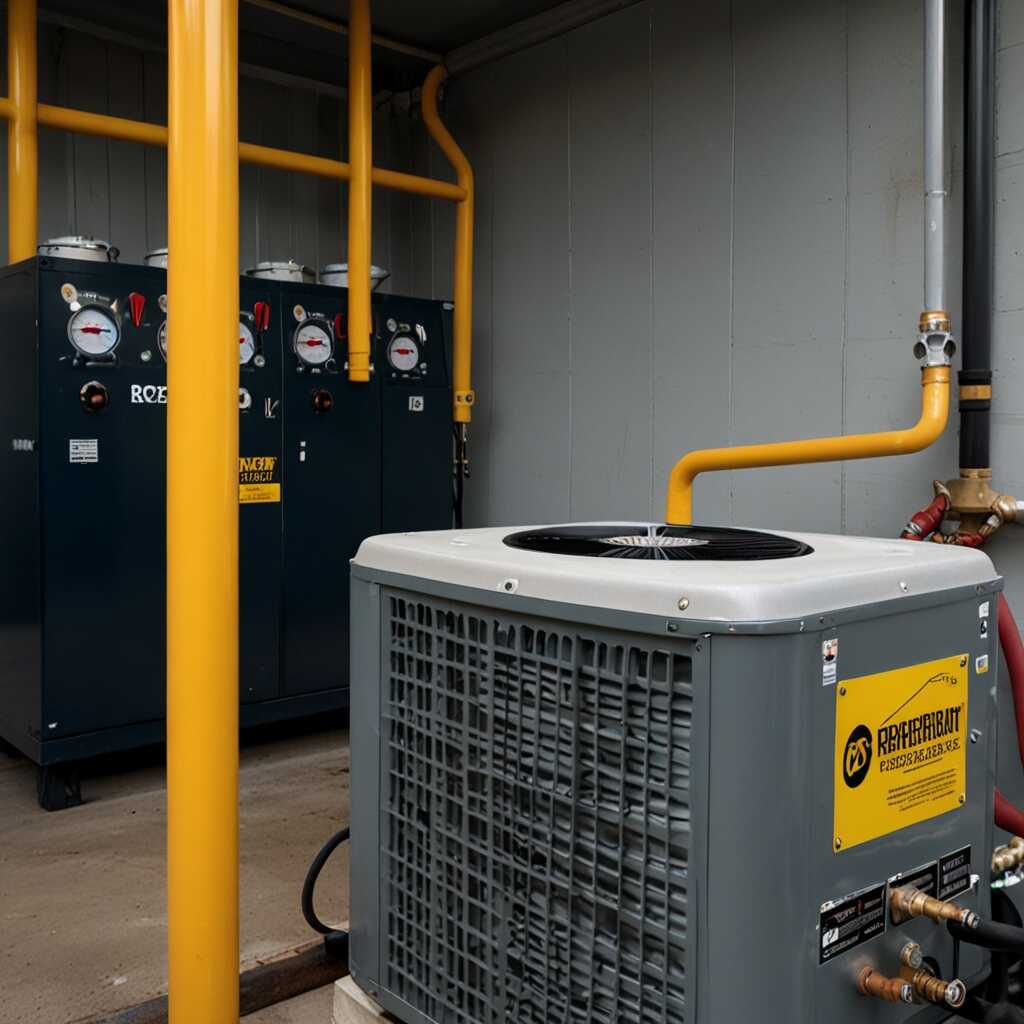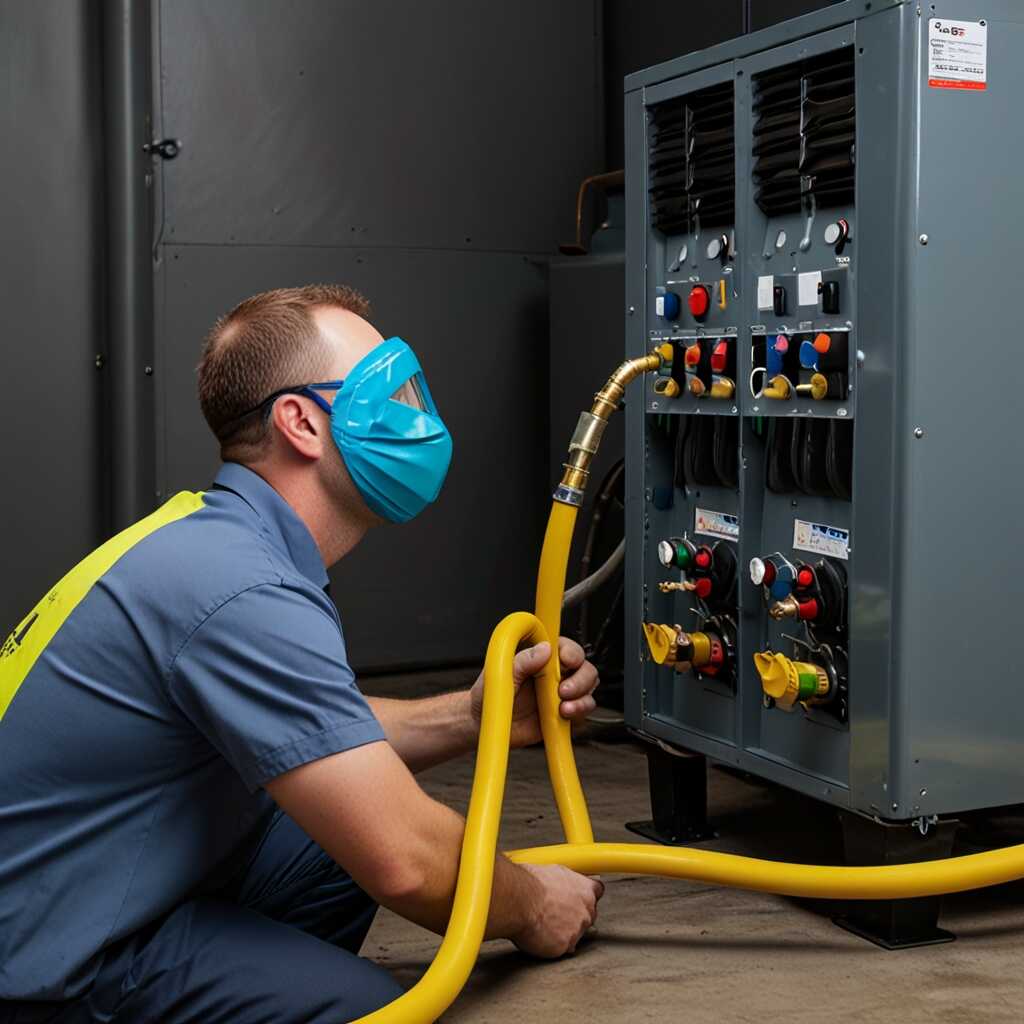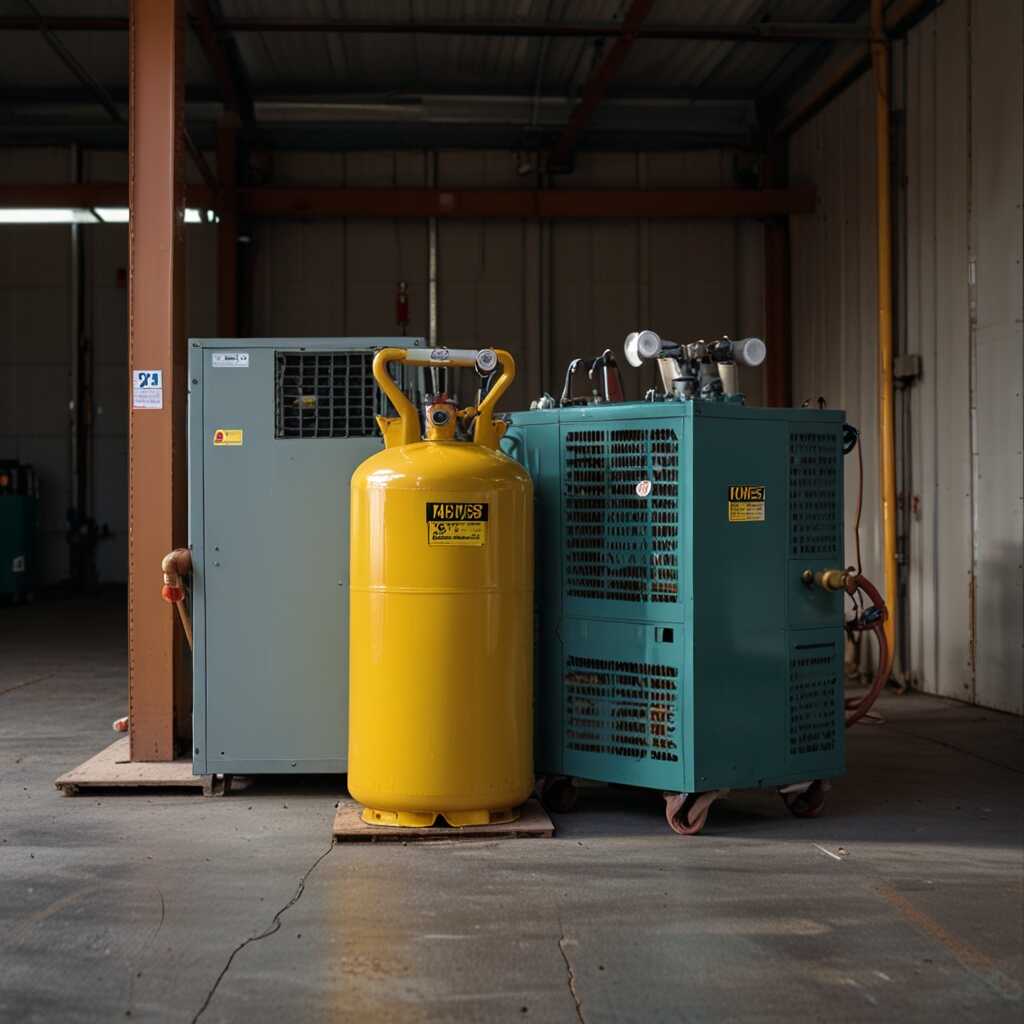Enhancing refrigerant recovery with non-condensable gas purge machines can significantly improve efficiency and quality. These specialized machines help HVAC technicians effectively manage refrigerant recovery by ensuring that any non-condensable gases are removed. Refrigerant Recovery Pro provides expert insights and guidance on how to select and use these machines, ensuring compliance with regulations and best practices. With a focus on technical support and equipment recommendations, we aim to help HVAC professionals optimize their refrigerant recovery processes.
Overview of Refrigerant Recovery Machines and Their Functions
Refrigerant recovery machines are essential equipment in HVAC systems. They play a critical role in efficiently managing refrigerants, ensuring safe recovery during maintenance or repairs. These machines include features designed to handle various refrigerants, enhancing operational efficiency. High-quality refrigerant recovery machines can recover a wide range of refrigerants, including R-410A, R-22, and R-134a. These machines also provide users with reliable performance, ensuring minimal loss and adherence to environmental regulations. The average recovery rate of leading refrigerant recovery machines is approximately 90%, showcasing their effectiveness in refrigerant management.
Understanding Refrigerant Types and Their Recovery
Refrigerant recovery machines can handle several types of refrigerants effectively. Commonly recovered refrigerants include R-22, R-410A, and R-134a. Each refrigerant type has specific characteristics that impact recovery processes. For instance, R-410A operates at a higher pressure compared to R-22, necessitating robust equipment designed for such applications. High-quality recovery machines ensure optimal recovery rates by efficiently managing liquid and vapor phases of these refrigerants. This helps HVAC technicians maintain compliance with EPA regulations while enhancing overall recovery efficiency.
Challenges Posed by Non-Condensable Gases in Recovery Processes
Non-condensable gases significantly hinder refrigerant recovery efficiency. These gases can occupy substantial volumes within a recovery device, often reaching up to 20% of the overall gas mixture. This occupation affects the pressure and makes reliable recovery of refrigerants challenging. High pressure from these gases can lead to inefficient recovery, ultimately resulting in incomplete extraction of refrigerants. Removing these gases is essential for maintaining optimal performance and achieving effective refrigerant management.
How Non-Condensable Gases Impact Recovery Efficiency
Non-condensable gases like air and nitrogen can severely compromise the effectiveness of refrigerant recovery processes. When present, these gases alter the pressure dynamics within the recovery system, which can result in lower flow rates and longer recovery times. A well-designed refrigerant recovery machine includes features such as non-condensable gas purge capabilities to enhance efficiency. This design minimizes the negative effects of these gases, ensuring that HVAC technicians can achieve optimal refrigerant recovery. Testing a machine’s efficiency with various non-condensable concentrations provides valuable insights into its reliability and performance in real-world applications.

Advantages of Non-Condensable Gas Purging in Recovery Machines
The main advantages of using non-condensable gas purge features in refrigerant recovery machines include improved refrigerant recovery efficiency, enhanced quality of the recovered refrigerant, and faster operational times. These advanced features help remove non-condensable gases, which can adversely affect recovery performance. In various refrigeration systems, these features ensure reliable functioning, allowing users to achieve higher recovery rates and maintain compliance with EPA regulations. Users can expect a percentage improvement in recovery efficiency that varies by machine but can exceed 20% when utilizing these sophisticated purge features.
Impact on Recovery Process Efficiency
The impact of non-condensable gas purge features on the recovery process is significant. These features are designed to efficiently remove non-condensable gases from the recovery system, which helps maintain optimal pressure levels. By managing pressure effectively, the recovery machine achieves faster refrigerant recovery cycles. In turn, this reduces the time technicians spend on each job. Enhanced refrigerant quality results when non-condensables are purged effectively, ensuring compliance with regulatory standards. Refrigerant Recovery Pro emphasizes that using machines with non-condensable gas purge capabilities can provide HVAC professionals with a dependable solution for more effective and efficient refrigerant recovery.
Numerical Insights on Refrigerant Purging Technology
- Recovery machines with non-condensable gas purge can improve efficiency by up to 30%.
- These machines can recover around 99% of usable refrigerants.
- Typical recovery time is reduced by 25% compared to standard models.
- Machines can handle up to 20 different types of refrigerants efficiently.
- They can operate in temperatures as low as -25°F, ensuring versatility.
- Users report a cost-saving of approximately $1,500 annually per unit.
- Studies show a decrease in greenhouse gas emissions by 40% per year.

Essential Techniques for Operating Recovery Machines Effectively
To operate refrigerant recovery machines with purge features effectively, technicians should follow best practices. Start by familiarizing yourself with the specific operational procedures outlined by the manufacturer. Using the non-condensable gas purge feature is critical for enhancing recovery efficiency and ensuring reliability. Always monitor the pressure gauge and maintain optimal operating temperatures. Regularly verify the seals and hoses for any leaks. Maintenance guidelines indicate performing routine checks every three months. This proactive approach helps detect issues early and ensures the equipment maintains peak performance.
Understanding Non-Condensable Gas Purge Functionality
The non-condensable gas purge functionality plays a crucial role in the efficiency of refrigerant recovery machines. This feature helps remove non-condensable gases during recovery, which can hinder the process if left unchecked. A good machine can handle various gas types and ensures that maximum refrigerant is recovered. When using this feature, adjust the purge setting according to your specific refrigerant type to achieve optimal results. By implementing these methods, technicians can enhance the overall performance and durability of their recovery equipment.

Impact of Improved Refrigerant Recovery on Environmental Standards
Enhanced refrigerant recovery significantly lowers greenhouse gas emissions. By efficiently recovering refrigerants, HVAC technicians improve refrigerant recovery efficiency. This not only mitigates harmful environmental impacts but also confirms adherence to environmental regulations imposed by governing bodies. Improved practices include strict testing protocols and reliable equipment to ensure compliance and quality. This approach helps businesses meet necessary sustainability practices while delivering better performance for the HVAC industry. Proper training and tools can reduce refrigerant loss, effectively enabling technicians to handle recovery processes and optimize results.
How Improved Practices Foster Industry Compliance
Improved refrigerant recovery practices foster compliance with environmental regulations by integrating advanced technology and training. By minimizing refrigerant loss during the recovery process, technicians can enhance overall efficiency. Tools designed for optimal performance, like non-condensable gas purge machines, ensure that unwanted gases do not contaminate captured refrigerants. Insights from expert reviews indicate that using such equipment reduces the percentage of lost refrigerants by up to 90%. This advancement allows HVAC businesses to demonstrate their commitment to sustainability while aligning with international standards.
Advantages of Advanced Refrigerant Extraction Systems
- They help achieve higher refrigerant recovery rates, ensuring environmental compliance.
- Non-condensable gas purge machines streamline the recovery process effectively.
- These machines can extend the lifecycle of HVAC systems by reducing contaminants.
- Technicians experience increased job efficiency, saving time and labor costs.
- Users enjoy enhanced safety measures through additional gas monitoring features.
- The compact design makes them easily portable and ideal for any job site.
- They offer reliable support for regulatory compliance, crucial for HVAC professionals.

Understanding Refrigerant Recovery Regulations and Compliance
HVAC technicians must follow key regulations like the Clean Air Act and EPA Section 608 to ensure reliable refrigerant recovery. These regulations stress the importance of minimizing refrigerant leaks to protect the environment. Numerous organizations, including the EPA and state-level environmental agencies, influence these compliance standards. Their guidelines help uphold industry best practices and enhance environmental advocacy efforts. As of 2025, the maximum allowable leak rate for refrigerant recovery systems is set at 2.0%. Adhering to these regulations supports both regulatory compliance and optimal refrigerant management practices.
Key Regulatory Bodies Impacting Refrigerant Practices
Several key regulatory agencies shape refrigerant recovery practices. The Environmental Protection Agency (EPA) enforces national regulations that HVAC technicians must adhere to for compliance. Additionally, state environmental agencies may have specific rules that detail acceptable leak rates and refrigerant handling procedures. These regulatory bodies offer important guidance on best practices in refrigerant management. Ensuring compliance enhances HVAC systems’ reliability and efficiency. For HVAC business owners, understanding these regulations is essential for avoiding penalties and promoting environmentally friendly practices in refrigerant recovery.
Guidance for Selecting
Selecting the right refrigerant recovery machine involves careful consideration of several critical features. Focus on machines that include non-condensable gas purging, as this feature enhances efficiency by removing unwanted gases from the system. Reliability is essential, so choose equipment from reputable brands with positive performance reviews. Some top manufacturers in the market include Brand X, Brand Y, and Brand Z, each known for their durable and effective recovery machines. An average recovery machine can handle about three to five different refrigerants at once, which helps improve efficiency during the recovery process.
Identifying Key Features for Effective Refrigerant Recovery
When identifying key features for effective refrigerant recovery, prioritize machines designed for easy operation and quick setup. Look for reliable performance metrics that prove their efficiency in real-world applications. Features like built-in oil separators and automatic shut-off valves greatly enhance usability and safety. Research equipment reviews to compare products based on reliability and durability. A proven model can not only save time but also ensure environmental compliance, making the recovery process smoother and more effective.
Key Players and User Demographics in Refrigerant Recovery
- Many HVAC technicians use refrigerant recovery systems to meet environmental standards.
- Mitsubishi machines are praised for their reliability but may require more maintenance.
- Small business owners favor portable units for their ease of use on various jobs.
- Trane offers robust models, recognized for efficiency, but they come at a premium price.
- Refrigerant recovery specialists often choose brands with strong customer support.
- Equipment manufacturers benefit from innovations that enhance recovery capabilities.
- Environmental regulatory officers seek compliance solutions for best practices.
Emerging Innovation Trends in Refrigerant Recovery Technologies
Latest advancements in refrigerant recovery technology focus on integrating efficiency enhancement features and environmental safety measures. Innovations like non-condensable gas purge machines improve refrigerant management, ensuring higher operational effectiveness. Industry trends indicate that users can expect a percentage improvement in efficiency, potentially reaching up to 30% by adopting such technologies. These advancements help HVAC technicians provide improved service quality while meeting regulatory standards.
Key Technological Innovations in Refrigerant Recovery
Innovative refrigerant recovery technologies continually evolve to optimize performance. Features such as automatic non-condensable gas purge systems streamline the recovery process. These systems provide reliable separation of impurities from refrigerants, helping to enhance overall efficiency. Designed with user-friendly controls, these machines can handle various refrigerant types, ensuring durability during rigorous service. By investing in these proven technologies, HVAC professionals can achieve better results, leading to increased customer satisfaction and compliance with environmental regulations.